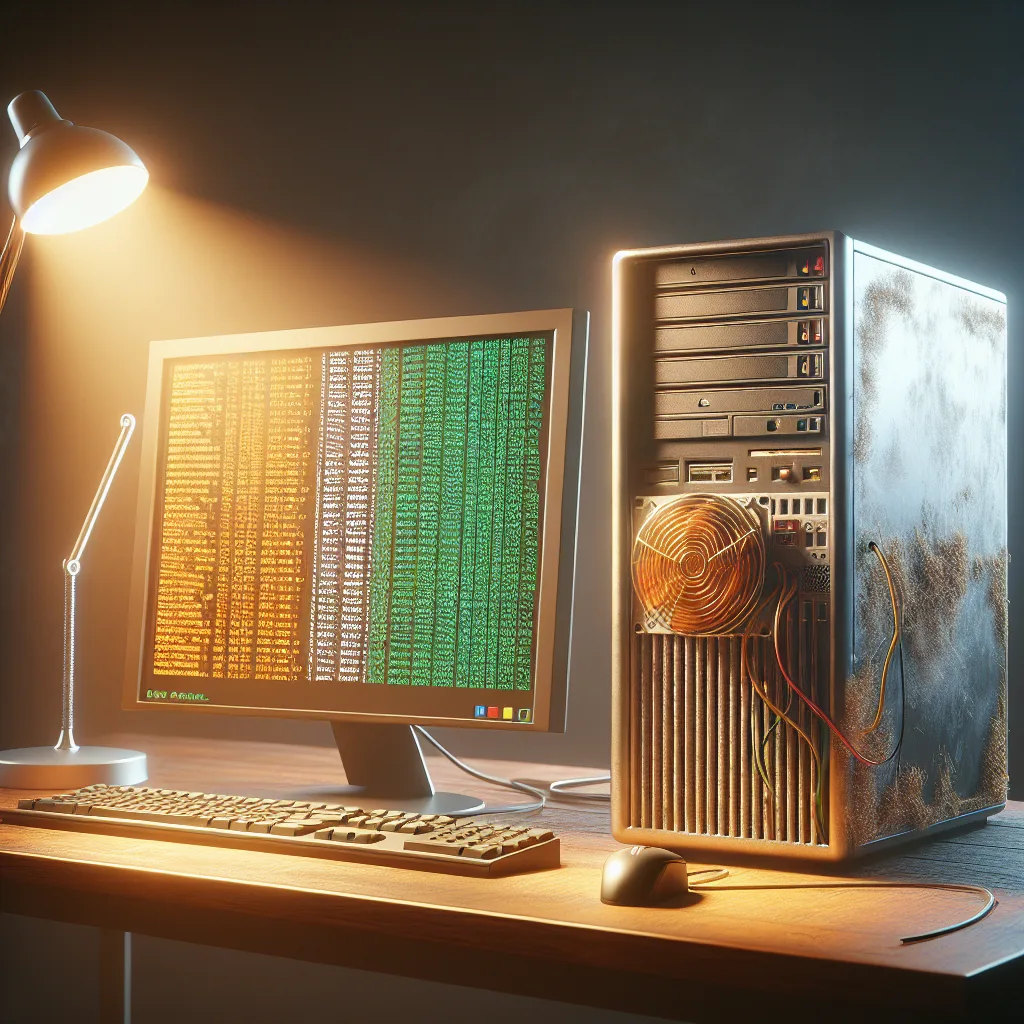Thinking of buying a cheap, used PC for a home server? Here’s an honest guide to know if it’s worth it for a NAS or Minecraft server.
You’re scrolling through Facebook Marketplace, and you see it. An old office PC, listed for next to nothing. Maybe £40, maybe $50. The gears in your head start turning. You’ve been wanting to set up a small home server—something for storing files or maybe even hosting a private Minecraft world for you and your friends.
This could be it. The perfect, cheap entry point.
But then you hesitate. Is a machine that cheap actually any good? Or is it just a dusty box that will cause more headaches than it’s worth?
I’ve been there, staring at that exact same kind of listing. It’s a tempting idea, but it’s smart to pause and ask if it’s the right move. So, let’s talk it through.
The Dream vs. The Reality
The dream is simple: you hand over a couple of notes, take the PC home, plug it in, and suddenly you have a capable server running 24/7. Your old laptop that buckled under the pressure of running a Minecraft server can finally retire.
The reality is usually a bit more complicated.
These super-cheap PCs are almost always old office desktops. Think Dell Optiplex or HP EliteDesk models from 5-10 years ago. They were built for running Word and browsing the internet, not for heavy lifting.
So, what does that mean for your server plans?
For a File Server (NAS):
For a simple Network-Attached Storage (NAS) setup where you’re just storing and accessing files, one of these machines can actually work pretty well. The processor doesn’t need to be a powerhouse. As long as it can run a lightweight operating system (like TrueNAS or a simple Linux setup), you’re mostly good to go. The main bottleneck will be the hard drives, but we’ll get to that.
For a Minecraft Server:
This is where things get tricky. Minecraft, especially a server, relies heavily on single-core CPU performance. That means it needs one part of its brain to be really, really fast. Older office PCs often have CPUs with many cores that are all pretty slow.
An underpowered CPU will lead to “tick lag,” where the game world slows down, blocks reappear after you break them, and the whole experience feels sluggish for everyone connected. It might be better than your old laptop, but it might not be the smooth experience you’re hoping for.
The Real Cost of a “Cheap” PC
That £40 price tag is just the entry fee. To make that old PC genuinely useful, you’ll almost certainly need to spend a bit more.
Here are the two biggest upgrades to plan for:
- RAM: These machines often come with a measly 4GB or 8GB of RAM. For a server doing more than one thing, you’ll want at least 16GB. Minecraft, in particular, loves to eat up RAM. You’ll need to check what kind of RAM it uses (likely older, slower DDR3) and find a compatible kit.
- Storage: The single biggest upgrade you can make is swapping the old, slow hard disk drive (HDD) for a solid-state drive (SSD). The original hard drive is likely the slowest component in the entire system. Installing the operating system on an SSD will make the whole machine feel dramatically faster and more responsive. You can still use large, cheap HDDs for mass file storage, but the OS needs an SSD.
Suddenly, your £40 project is closer to £100 or £120 after you buy more RAM and a new drive. It’s still not a bad deal, but it’s important to go in with your eyes open.
So, Should You Buy It?
Here’s my honest take.
Yes, buy it if: You are a tinkerer at heart. If you enjoy the process of taking something old and making it useful, this is a fantastic project. It’s a low-cost way to learn about server hardware, networking, and operating systems like Linux. The satisfaction of getting it all working is a reward in itself. You’re not just buying a server; you’re buying an education.
No, don’t buy it if: You just want something that works, right now, with minimal fuss. If your main goal is a reliable, performant Minecraft server and you get frustrated by technical troubleshooting, you might be better off saving a bit more. A slightly newer used PC (maybe a few generations younger) or a dedicated machine like an Intel NUC might cost more upfront but save you a lot of time and potential disappointment.
A Quick Checklist Before You Buy
If you decide to go for it, here’s what you should try to find out before handing over your cash:
- What is the exact CPU model? This is the most important question. You can Google the model (e.g., “Intel Core i5-4570”) to see how old it is and get a rough idea of its performance.
- How much RAM is in it? And what type (DDR3 or DDR4)? This will tell you how much you need to buy to upgrade it.
- Does it have a hard drive? Ask if you can see it power on to make sure it’s not completely dead.
- What’s the size? Some of these office PCs are “SFF” or Small Form Factor. They’re compact, which is nice, but they have very little room inside for extra hard drives.
Ultimately, turning a cheap old PC into a server is a classic rite of passage for many tech enthusiasts. It’s a journey of discovery and a great lesson in the value of hardware. It won’t be a powerhouse, but it will be yours. And sometimes, that’s the whole point.
